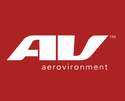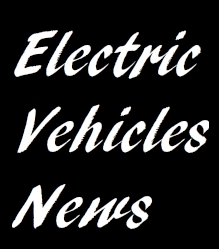AeroVironment Inc.
 |
|
Industry |
Aerospace, Energy |
| Founded |
1971 |
| Headquarters |
Southern California,
USA |
| Key people |
Paul B. MacCready, Jr., Founder |
|
Website |
www.avinc.com |

AeroVironment founder and former Chairman
Paul MacCready shows a cross section of the AeroVironment/NASA
Helios Prototype wing spar.

Gossamer Condor at NASM

Pathfinder Plus (left) and Helios Prototype (right) on the
Dryden ramp
AeroVironment Inc is a technology company in
Monrovia, California and
Simi Valley, California that is primarily involved in energy
systems,
electric vehicle systems, and
unmanned aerial vehicles (UAVs).
Paul B. MacCready, Jr., a famous designer of
human powered aircraft, founded the company in
1971. The company is probably most well-known for developing a
series of lightweight human-powered and then solar-powered vehicles.
Vehicles developed
-
Gossamer Condor - The first successful human-powered airplane. The
Gossamer Condor is on display at the
National Air and Space Museum, since it won the first
Kremer Prize in 1977.
-
Gossamer Albatross - In 1979 this human-powered plane flew
23 miles (37 km) across the
English Channel and claimed the largest prize in aviation history.
Another of these planes is displayed at the National Air and Space
Museum.
-
Gossamer Penguin - A solar-powered variant of the Gossamer
Albatross.
-
Solar Challenger - This plane flew 163 miles (262.3 km) from Paris France
to
England on solar power.
-
Pathfinder and Pathfinder Plus - This unmanned plane, built by
AeroVironment as a part of the
NASA ERAST Program, demonstrated that an airplane could stay aloft
for an extended period of time fueled purely by solar power. After
initial successes, the Pathfinder was rebuilt into the larger
Pathfinder Plus, which is also on display at the National Air and
Space Museum.
-
Centurion - The Centurion was an expansion of the Pathfinder
concept, designed to achieve the ERAST Program goal of sustained
flight at 100,000 feet (30,480.0 m) altitude.
-
Helios Prototype - Derived from the Centurion, this
solar cell and
fuel cell powered
UAV set a world record for flight at 96,863 feet (29,523.8 m). It
was intended to be the prototype for the production Helios aircraft,
envisioned as an "atmospheric satellite". The ERAST program was
terminated in 2003, and as of 2008 Helios has not entered production.
In actuality, it has been reborn in the form of the Global Observer
UAS, currently in development under a Joint Concept Technology
Demonstration led by USSOCOM. The key technology shift was switching from solar power to
liquid hydrogen power.
-
Sunraycer - This solar-powered car won the first world's first
solar car race in Australia in 1987. The next fastest car finished two
days after the Sunraycer. This car is at the
Smithsonian National Museum of American History.
-
GM Impact - This was an
electric car, developed as a serious prototype for a
mass-production consumer car.
-
Raven - a small military UAV. It is hand launched with a wingspan
of 4.5 feet (1.4 m) and a weight of 4.2 pounds (1.9 kg), providing
color and infrared video to its handheld ground control as well as
remote viewing stations. Over 9,000 Ravens have been delivered or are
on order as of June 2008.
-
Wasp - a miniature, hand-launched production
UAV that provides aerial observation at line-of-sight ranges up to
3.1 miles (5 km). In 2007, the Wasp was selected by the US Air Force
as the choice for their BATMAV Program. As of 2008, over 1,000 Wasp aircraft have been delivered to
customers worldwide.
-
Puma - a small lightweight, hand-launched production
UAV that provides aerial observation at line-of-sight ranges up to
6.2 miles (10 km). Puma's avionics enable autonomous flight and
precise GPS navigation. It was originally designed to demonstrate
advanced propulsion technologies for such aircraft. It flew in June
2007 for five hours
powered by an onboard "fuel cell battery hybrid energy storage
system." Another attempt in November 2007 saw a flight time greater
than seven hours.
Puma integrates licensed ProCore fuel cell system technology from
Protonex Technology Corporation
and hydrogen generation technology from Millennium Cell, Inc. On July
2, 2008, U.S. Special Operations Command (USSOCOM) selected the Puma
AE variant as its All Environment Capable Variant (AECV) solution.
-
SkyTote - a VTOL-fixed wing hybrid UAV, which has attained the
advantages of both plane designs (respectively VTOL takeoff capability
and decreased energy usage).
Programs
AeroVironment holds a five-year, $4.7 million IDIQ
(indefinite-delivery, indefinite-quantity) contract from the
U.S. Air Force Research Laboratory for the development of advanced
propulsion technologies for UAVs. The contract also provides for
specific technological tasks such as integration of solar cells into
aircraft wings, electric motor efficiency improvement technologies, and
development of hydrogen storage systems for aircraft.
As a US-based provider of products and technology for clean energy
and efficient vehicles, AeroVironment has received a United States
patent for technology that facilitates the optimal charging, management,
control and maintenance of battery packs, chargers and electric vehicles
(EVs).
"No electric vehicle charging company left behind." Recently in May
2009, Nissan Partnered with AeroVironment and the District of Columbia
to install infrastructure to accommodate electric fueling to the
hundreds of electric vehicles it envisions will be put to use by both
the government and the public over the next few years.




